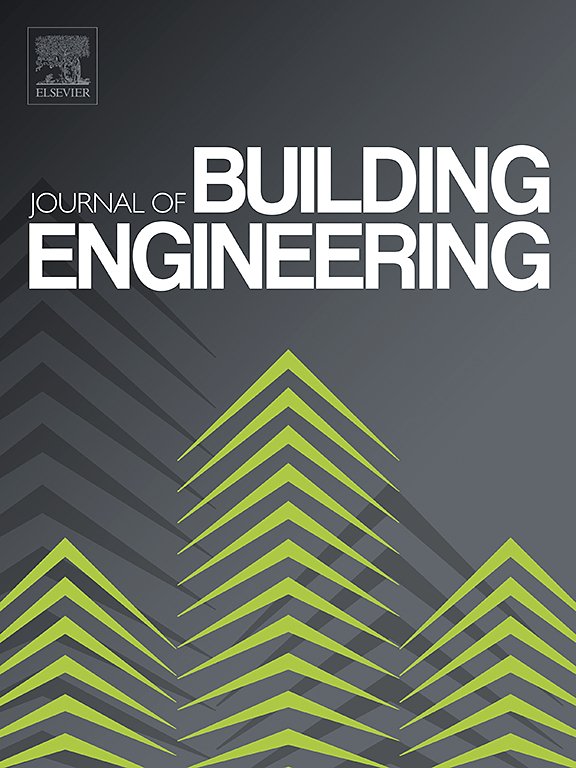通过螺旋钢筋约束克服可持续压铸再生骨料混凝土的脆性
IF 6.7
2区 工程技术
Q1 CONSTRUCTION & BUILDING TECHNOLOGY
引用次数: 0
摘要
再生骨料粘附砂浆疏松多孔,产生的混凝土强度低、耐久性差。新开发的压浇技术通过对新拌混凝土施加压力,挤出再生骨料混凝土(RAC)中多余的水分和空气,并将水泥浆强制灌入旧的粘结砂浆中以增强其强度,从而有效地解决了上述问题。然而,RAC 的密实度和抗压强度显著提高的同时,压缩脆性也明显增加。因此,本研究试图通过适当的横向加固设计来克服可持续压铸 RAC 的脆性。为实现这一目标,实验研究了钢螺旋约束 RAC 试样的轴向压缩行为。研究发现,压铸方法几乎将非约束 RAC 的抗压强度提高了一倍,并将钢螺旋约束 RAC 的极限轴向应力提高了 69.9%。钢螺旋密实普通铸造 RAC 表现出典型的压缩失效,其应力-应变曲线以应变硬化为特征,而钢螺旋密实压缩铸造 RAC 则表现出局部剪切失效,其应力-应变曲线以应变软化为特征。通过减小螺旋间距,可显著改善钢螺旋约束压缩铸造 RAC 的应变软化特性。根据本研究和文献中获得的测试结果,分别提出了钢螺旋约束压缩铸造 RAC 和普通铸造 RAC 的应力-应变模型。应力-应变模型的预测精度明显高于文献中的选定模型。本文章由计算机程序翻译,如有差异,请以英文原文为准。
Overcoming the brittleness of sustainable compression-cast recycled aggregate concrete through steel spiral confinement
The loose and porous adhered mortar of recycled aggregates produces concrete with low strength and poor durability. The newly developed compression casting technology applies pressure to fresh concrete to squeeze out excess water and air in the recycled aggregate concrete (RAC) and force the cement paste into the old adhered mortar to strengthen it, thereby effectively solving the aforementioned problems. However, the significant increase in the compactness and compressive strength of the RAC is accompanied by a pronounced increase in compression brittleness. Hence, this study attempts to overcome the brittleness of sustainable compression-cast RAC through proper design of transverse reinforcement. To achieve this objective, the axial compression behaviour of steel spiral-confined RAC specimens was experimentally investigated. It is found that the compression casting approach almost doubled the compressive strength of the unconfined RAC and improved the ultimate axial stress of the steel spiral-confined RAC by up to 69.9 %. The steel spiral-confined normal-cast RAC exhibited typical compression failure accompanied by a stress–strain curve characterised by strain hardening, whereas the steel spiral-confined compression-cast RAC exhibited localised shear failure accompanied by a stress–strain curve characterised by strain softening. The strain-softening behaviour of steel spiral-confined compression-cast RAC can be significantly improved by reducing the spiral pitch. Based on the test results obtained in this study and in the literature, stress–strain models were proposed separately for the steel spiral-confined compression-cast RAC and normal-cast RAC. The stress–strain models exhibited a significantly higher prediction accuracy than the selected models in the literature.
求助全文
通过发布文献求助,成功后即可免费获取论文全文。
去求助
来源期刊

Journal of building engineering
Engineering-Civil and Structural Engineering
CiteScore
10.00
自引率
12.50%
发文量
1901
审稿时长
35 days
期刊介绍:
The Journal of Building Engineering is an interdisciplinary journal that covers all aspects of science and technology concerned with the whole life cycle of the built environment; from the design phase through to construction, operation, performance, maintenance and its deterioration.
 求助内容:
求助内容: 应助结果提醒方式:
应助结果提醒方式:


